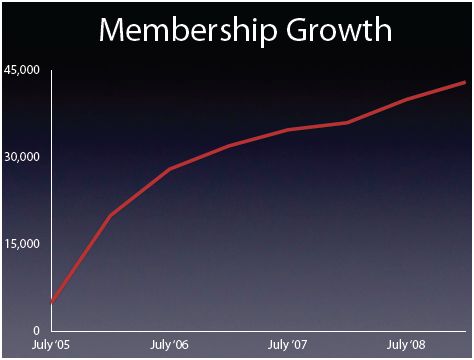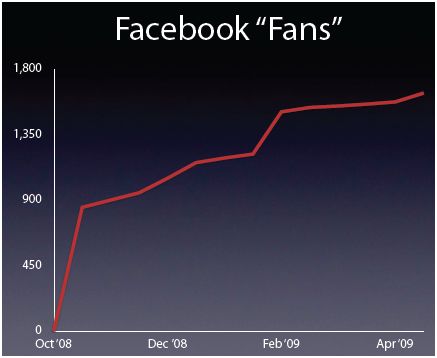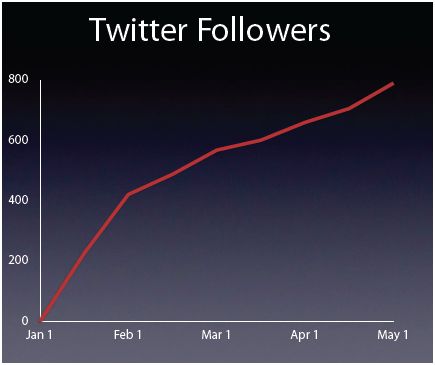If you have a point of view on how the relationship of companies to consumers and communities has been changed by social media, I’d like to hear from you.
 Marketing Magazine has asked several Canadian bloggers to crowdsource a feature-length article for Marketing about how people are using social media to shape perceptions of companies and brands and how companies should adjust to this new reality.
Marketing Magazine has asked several Canadian bloggers to crowdsource a feature-length article for Marketing about how people are using social media to shape perceptions of companies and brands and how companies should adjust to this new reality.
I’ve agreed to participate, along with Maggie Fox, David Jones, and Duarte Da Silva. We’re being coordinated and edited by Marketing Mag’s Jeromy Lloyd and David Crow is setting up a workspace to enable us to write and edit collaboratively.
As a first step Jeromy has suggested that we look at the crises involving Motrin, Amazon and Domino’s. This should give us a starting point to identify the issues that are involved when the online world wrests control of brands from companies.
And this is where you come in. I’d like to get some input from you about what really happened and its long term significance.
To be truthful, I rarely purchase anything from Amazon and never have used Motrin (I didn’t even know what it was prior to the Twitter storm). Nor have I ever eaten anything from Domino’s. So, my perspective on #amazonfail, #motrinmoms and #dominosvideo is that of a disinterested observer. In fact, when I first saw references to each of these, I did not follow the links. I simply did not care about the brands. However, when I saw the fourth or fifth reference to each, I followed the links. And it really didn’t take more than 15 minutes of online time for me to see enough references to pique my curiosity.
My starting point on #amazonfail is that it was largely invisible to me. I buy my books at Chapters and rarely visit Amazon. Moreover, I was offline when the initial event was noted and I caught wind of it only through Twitter. The Twitter stream suggested that Amazon had done something that offended many people. However, it wasn’t clear from the Twitter stream exactly what the problem was. This goes to show a shortcoming of many tweets. They don’t provide context. Nor do those “in the know” bother to define hashtags or remind us what they stand for.
I had a similar experience with Motrin Moms. I missed the initial weekend wave of indignation. By the time I focused on it, others had already weighed in saying that Motrin had caved too quickly (largely because they were bewildered as other non-participants in social media might be), that the reaction had been driven by one perspective (that happened to be online at that time) and that as others came online a more balanced view developed.
I tweaked a bit more quickly to the Domino’s problem. One of the first Tweets I saw included a link to the video. An immediate, visceral statement of the problem: Don’t trust the food that you receive from Domino’s (or any fast food restaurant.) Here, the problem wasn’t what people were saying about the company’s actions. The problem was video evidence of behaviour on the part of employees that fulfilled our worst fears about food preparation. This was the real world realization of the whispered tale of the “secret sauce” on Big Macs.
As a non-patron of these brands, I became aware of the controversy, but not consumed by it. I did not become engaged in the conversation. However, each controversy did affect my impression of each brand.
How about you? I’d love to hear about your take on what happened here.
- How did you find out about each of these crises? What was your reaction?
- Were your perceptions of the brands changed?
- What are the lessons we can learn and apply in the future?
I plan to use any comments I receive as input for the Marketing article. And hopefully, I’ll receive several comments and links that I can quote and point to in the article. If I do, you can be sure that I’ll give you full credit.
UPDATE 090512: Well, experiments are good. Sometimes they don’t take you where you expect to go. And that’s the case here. Marketing reassigned Jeromy to other stories and so this experiment in crowdsourcing an article ended. Nevertheless, I learned something. Crowdsourcing an article drawing on the time and expertise of several busy people is tough – even with social media tools. It takes more time and effort than you might expect.
 Every year in the spring, the members of the PRSA’s Counselors Academy gather in a beastly hot southern resort for the organization’s spring conference. Counselors Academy membership is restricted to principals of PR firms or senior practitioners (at least 10 years consulting experience). So, the conversation is unlike any other gathering I have found.
Every year in the spring, the members of the PRSA’s Counselors Academy gather in a beastly hot southern resort for the organization’s spring conference. Counselors Academy membership is restricted to principals of PR firms or senior practitioners (at least 10 years consulting experience). So, the conversation is unlike any other gathering I have found. Robert Stephens, founder of the Geek Squad, on how Geek Squad used reputation to build a strong brand;
Robert Stephens, founder of the Geek Squad, on how Geek Squad used reputation to build a strong brand;

 Yesterday, I
Yesterday, I 





 Oops. In doing this, I overlooked the fact that a Social Media Book Club already exists in Ottawa. The
Oops. In doing this, I overlooked the fact that a Social Media Book Club already exists in Ottawa. The  o you search for recommendations from others you know and trust before deciding whether to buy or read a specific book?
o you search for recommendations from others you know and trust before deciding whether to buy or read a specific book? Why Shelfari?
Why Shelfari? Amber MacArthur
Amber MacArthur Amber, Chris and Jeff will provide Third Tuesday participants with advice on how to shoot and edit video, how to create community around your videos online, and how to monetize online video.
Amber, Chris and Jeff will provide Third Tuesday participants with advice on how to shoot and edit video, how to create community around your videos online, and how to monetize online video. Marketing Magazine
Marketing Magazine